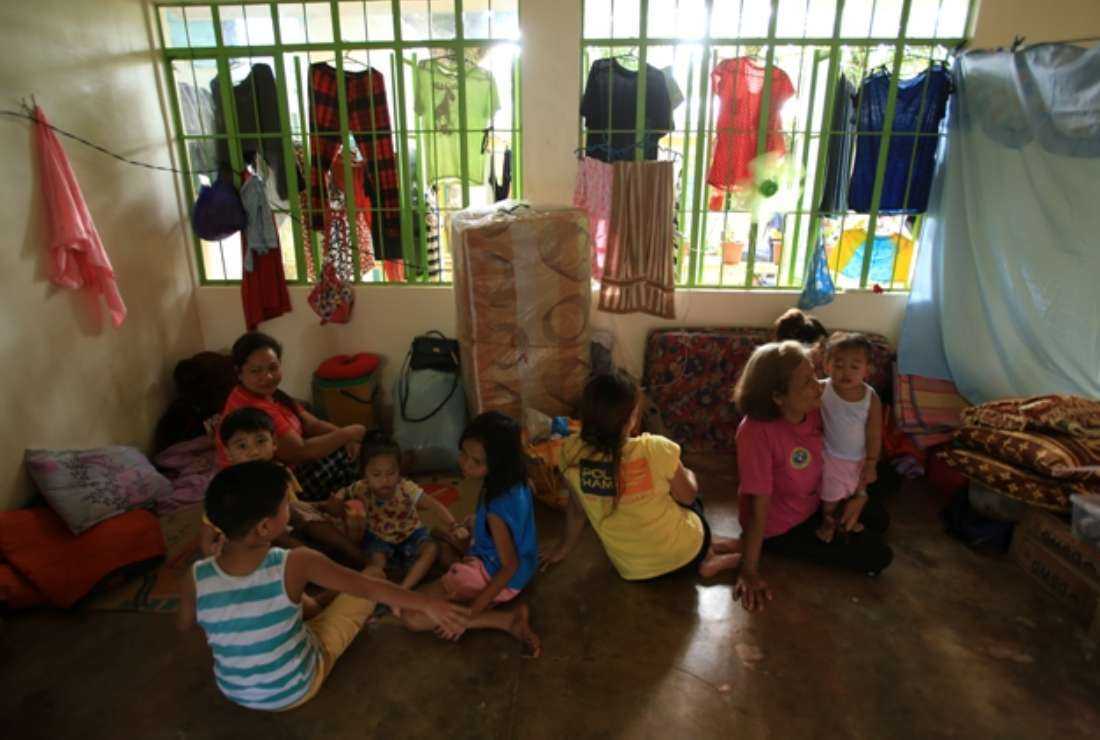
Evacuees are in for months-long displacement as experts say volcanic activity may persist for a few months

People rest inside the Gabawan elementary school, used as an evacuation center following increased seismic activity from nearby Mayon volcano, in Daraga, Albay province on June 11. Thousands of people living near the Philippine volcano have taken shelter in evacuation centers as officials warned of health risks from ash and toxic gases spewing from the rumbling crater. (Photo: Charism Sayat / AFP)
At least 14,000 Filipinos have fled their homes in the Bicol region, south of Luzon, after the country’s most active volcano spewed lava and noxious gases, authorities said.
The Mayon volcano, also known as the world’s perfect cone, began spewing ashes on June 8 and lava is now seen flowing at the volcano’s crater together with occasional earth tremors.
People who fled their homes since June 12 may have to extend their stay inside the classrooms and basketball courts as the Philippine volcanic experts expect the ongoing eruption to continue for several months.
“Based on our previous experiences, this volcanic activity may persist for a few months,” Teresito Bacolcol, chief of the state volcanology and seismology agency, told DZMM radio.
Bacolcol said police authorities have established checkpoints to forbid people from entering within the 6-kilometer (3.7 miles) radius of the volcano.
“It is for the common good. No person is allowed to go within the 6-kilometer danger zone because of the lava flow,” Bacolcol added.
The people evacuated from their homes are having a tough time inside the overcrowded evacuation centers.
“We are staying in a classroom good for 30 to 40 people with only one comfort room. But we are more than 100 in this room,” Carlos Catiibay, a hog raiser from Albay told UCA News.
Catibay, 45, revealed that he and his 28-year-old son, Rene, were forced to return once a day to their home to feed the pigs.
“Our living depends on the pigs we are raising. The semester will soon begin, which means I better sell those pigs alive so I have the money to pay for my two children’s college education,” he said.
He thought the risk was “worth taking.”
“Will the government pay for our children’s tuition fees? If they [police authorities] find out, we will deal with the problem,” he added.
Ariana Ruiz, 32, a mother of four, who feeds her family by selling barbeque and broomsticks in the market at the province’s capital, Legazpi City, said the eruption had robbed her of her regular income.
“We feel like prisoners here in the evacuation centers. Although we are being fed, I need to go back near the foot of the volcano because that is where we get our raw materials,” Ruiz told UCA News.
The Diocese of Legazpi has been giving food packs and relief goods to thousands of residents sheltered inside government schools and basketball courts. Parishes in the region have been sending their Sunday collections to ensure food for the evacuees.
“We are giving food to the people, yes. But of course, it is inevitable that they need to catch fish, they need to earn a living. But until danger dissipates, I call for calm and patience,” Legaspi priest Diego Gupta told UCA News.
Help us keep UCA News independent
The Church in Asia needs objective and independent journalism to speak the truth about the Church and the state.
With a network of professionally qualified journalists and editors across Asia, UCA News is just about meeting that need. But professionalism does not come cheap. We depend on you, our readers, to help maintain our independence and seek that truth.
A small donation of US$2 a month would make a big difference in our quest to achieve our goal.

Share your comments